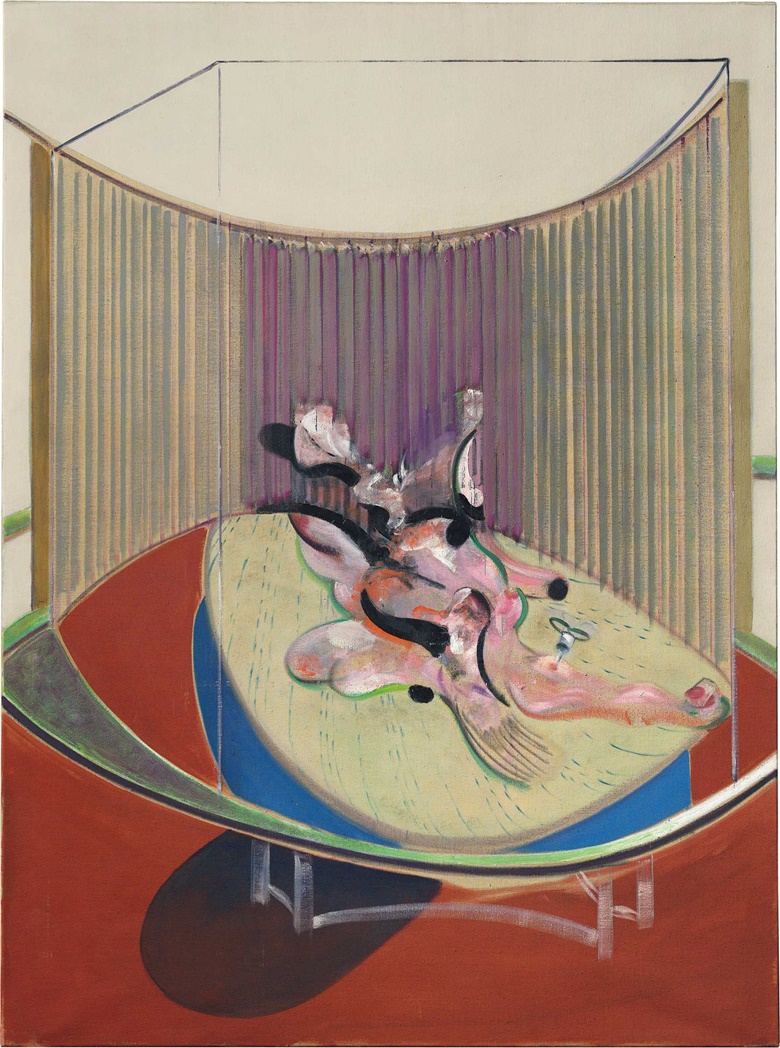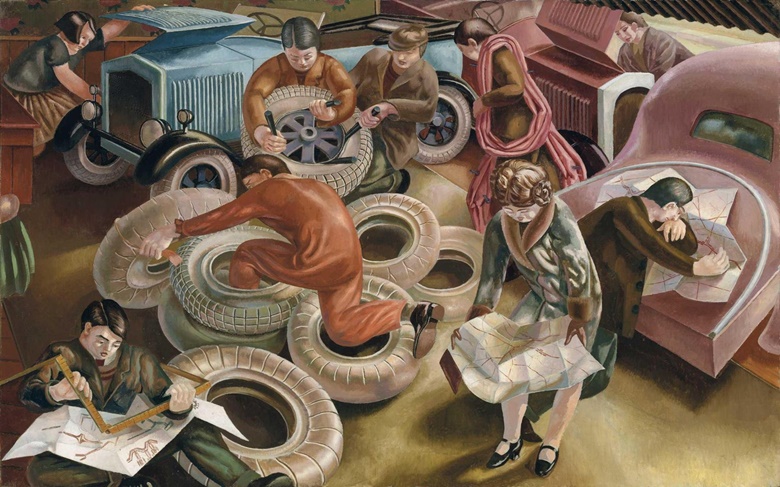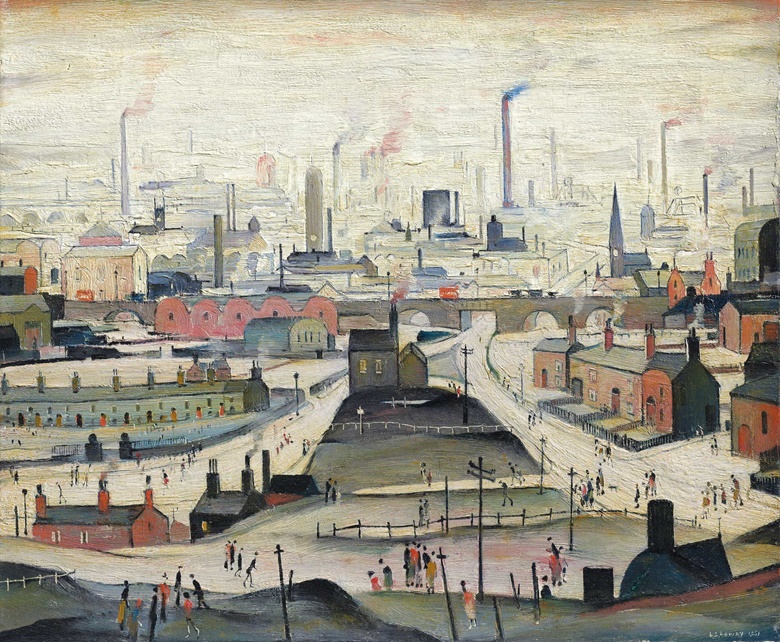Christie’s announces the sale of three further major works by three of the great modern British painters of the 20th Century which will be sold in London on the 30 June 2016. The paintings by Francis Bacon, Sir Stanley Spencer, offered from the Andrew Lloyd Webber Foundation,and L.S Lowry were executed in 1968, 1929 and 1951 respectively. Each defines a high point in the artists’ careers at moments when their invention established them as innovative geniuses of their generation. These highlights will be on public view in New York (6 to 12 May) and Hong Kong (26 to 30 May) alongside other renowned paintings by Lucian Freud, Lord Leighton and Sir Joshua Reynolds, before being sold in London, when Christie’s celebrates the artistic legacy of four centuries of British art at the global headquarters in London from 17 June to 15 July.
Francis Bacon’s landmark work Version No. 2 of Lying Figure with Hypodermic Syringe,
1968, is a soaring canvas that shows Bacon at his most formally
inventive and is a rare example of a female nude in his practice
(Estimate on Request: in the region of £20 million). Apparently based in
part on a photograph of Henrietta Moraes, one Bacon’s inner circle and
closest companions from Soho’s Colony Club, the work is one of the last
of a major series of reclining figures on beds, a theme that had
preoccupied Bacon since the late 1950s, that are amongst his most
renowned works.
One of the few paintings of lying figures with syringes that Bacon made in the late 1960s, two others of which are now housed in the Museo Nacional de Arte Reina Sofia in Madrid and the Fondation Beyeler in Basel, the work was previously a centrepiece in the much celebrated Vanthournout collection. The painting also provides a rare insight into Bacon’s understanding of Abstract Expressionism and in particular the legendary painting of women by Willem de Kooning; the central figure of Bacon’s canvas is described by swathes of abstract brushwork that animate her entire being, describing not only an external appearance but also the psychological drama of the 20th-century human condition.
The work is one of the few reclining nudes to come to the market in recent years and follows the standout performance of Portrait of Henrietta Moraes, 1963, at Christie’s in May 2015.
Francis Bacon's Works at Auction
__________________________________________________________________________
One of the few paintings of lying figures with syringes that Bacon made in the late 1960s, two others of which are now housed in the Museo Nacional de Arte Reina Sofia in Madrid and the Fondation Beyeler in Basel, the work was previously a centrepiece in the much celebrated Vanthournout collection. The painting also provides a rare insight into Bacon’s understanding of Abstract Expressionism and in particular the legendary painting of women by Willem de Kooning; the central figure of Bacon’s canvas is described by swathes of abstract brushwork that animate her entire being, describing not only an external appearance but also the psychological drama of the 20th-century human condition.
The work is one of the few reclining nudes to come to the market in recent years and follows the standout performance of Portrait of Henrietta Moraes, 1963, at Christie’s in May 2015.
Francis Bacon's Works at Auction
__________________________________________________________________________
The Garage, 1929,
is one of an important series of five pictures - defining the
industrial rebuilding and growth of Britain at the end of the 1920s - by
Sir Stanley Spencer, R.A. (1891–1959), a key artist in
the history of 20th century figurative painting. This is one of the
largest and most successful works in the series commissioned by the
Empire Marketing Board on the theme of Industry and Peace.
Painted in 1929, when industry was critical to the future of the country
and the Empire, and with the Wall Street crash looming, the car
industry would prove vital to the regeneration of the country. Britain
was seeking to replicate the new modern success story which had
blossomed in America with the Ford Motor Company.
One of the finest works by Spencer from this period to come to auction, this panorama captures not only a technological but social phenomenon: depicting women and men working together as equals; intrepid, modern, forward looking and glamorous. Celebrated for his visionary style and intensity of technique, this magnificent painting exemplifies Spencer’s characteristically complex figurative work. Compositionally, the rich curves and angles of the cars and the equipment tie the multiple characters together, creating an overarching balance and harmony.
This remarkable painting is being offered for sale by the Andrew Lloyd Webber Foundation, which will use the proceeds to further develop its worldwide support of vital projects that enhance arts education and participation, improve access and increase diversity across arts, culture and heritage. The painting is estimated to realise between £1.5 and £2.5 million.
_____________________________________________________________________________
One of the finest works by Spencer from this period to come to auction, this panorama captures not only a technological but social phenomenon: depicting women and men working together as equals; intrepid, modern, forward looking and glamorous. Celebrated for his visionary style and intensity of technique, this magnificent painting exemplifies Spencer’s characteristically complex figurative work. Compositionally, the rich curves and angles of the cars and the equipment tie the multiple characters together, creating an overarching balance and harmony.
This remarkable painting is being offered for sale by the Andrew Lloyd Webber Foundation, which will use the proceeds to further develop its worldwide support of vital projects that enhance arts education and participation, improve access and increase diversity across arts, culture and heritage. The painting is estimated to realise between £1.5 and £2.5 million.
_____________________________________________________________________________
Laurence Stephen Lowry, R.A.
(1887-1976) dedicated 40 years of his career to depicting the urban and
industrial landscape of the North of England, drawing inspiration from
his surroundings, particularly around Manchester where he lived from
1909 to 1948 (estimate: £1.5-2.5 million).
Painted in 1951, Industrial scene is a highly complex landscape, combining many of Lowry’s trademark motifs to create an extensive urban panorama. Filled with figures and houses against a background teeming with factories with billowing smoke from towering chimney stacks, this is one of the artist’s most compositionally successful and well-balanced industrial scenes. Characteristically, this is not a topographically accurate view but one that Lowry composed from many recognisable landmarks which recur throughout his work.
This painting highlights the way that Lowry often painted from an elevated viewpoint, giving the hurrying figures in Industrial scene a particularly diminutive feel, as they become almost engulfed within the urban sprawl that fades into the background, pulling the viewer into the heart of the scene. Lowry was fascinated with exploring the changing face of industry on both the landscape and the human figure. He painted some of his most successful industrial landscapes in the early 1950s, many of which are now held in public collections; the present work provides collectors with a rare opportunity to acquire an exemplary work from a private collection.
Painted in 1951, Industrial scene is a highly complex landscape, combining many of Lowry’s trademark motifs to create an extensive urban panorama. Filled with figures and houses against a background teeming with factories with billowing smoke from towering chimney stacks, this is one of the artist’s most compositionally successful and well-balanced industrial scenes. Characteristically, this is not a topographically accurate view but one that Lowry composed from many recognisable landmarks which recur throughout his work.
This painting highlights the way that Lowry often painted from an elevated viewpoint, giving the hurrying figures in Industrial scene a particularly diminutive feel, as they become almost engulfed within the urban sprawl that fades into the background, pulling the viewer into the heart of the scene. Lowry was fascinated with exploring the changing face of industry on both the landscape and the human figure. He painted some of his most successful industrial landscapes in the early 1950s, many of which are now held in public collections; the present work provides collectors with a rare opportunity to acquire an exemplary work from a private collection.


